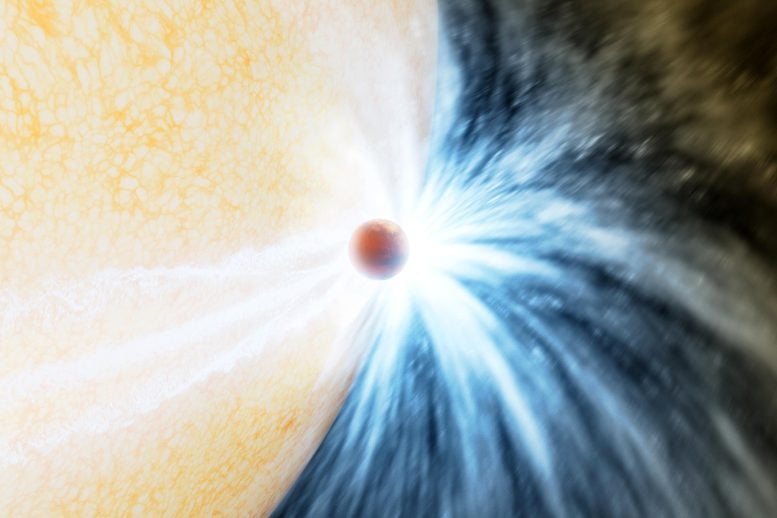
This artist’s impression shows a doomed planet skimming the surface of its star. Astronomers used a combination of telescopes to spot the first direct evidence of an aging, bloated sun-like star, like the one pictured here, engulfing its planet. These telescopes included the Zwicky Transient Facility (ZTF) at Caltech’s Palomar Observatory, the W.M. Keck Observatory, and NASA’s NEOWISE mission. The aging star depicted here, called ZTF SLRN-2020, is roughly 10 billion years old. It had begun to inflate over hundreds of thousands of years as it transformed into a red giant, and, as a result, inched closer to its inner planet. According to astronomers, when the planet was almost touching the surface of the star, the increasing frictional forces caused the planet to rapidly spiral inward. Eventually, on timescales that are not certain, the planet plunged into the core of the star. When that happened, the star inflated to four times its size and brightened by a factor of more than a hundred. ZTF SLRN-2020 lies about 12,000 light-years away in the constellation Aquila. Credit: Image: K. Miller/R. Hurt (Caltech/IPAC)
ZTF and NEOWISE spot evidence for the first known case of a star engulfing its planet.
For the first time, astronomers have caught a star in the act of swallowing a planet whole. The sun-like star, called ZTF SLRN-2020, lies about 12,000 light-years away in our galaxy and is thought to have engulfed a hot gas giant about the size of Jupiter. Scientists already knew that older stars will, as they puff up with age, ultimately ingest their inner orbiting planets. Our own sun is predicted to do so in 5 billion years, consuming Mercury, Venus, and likely Earth. But nobody had seen direct evidence for such a remarkable scenario until now.
“The confirmation that sun-like stars engulf inner planets provides us with a missing link in our understanding of the fates of solar systems, including our own,” says Kishalay De (MS ’18, PhD ’21), a postdoctoral scholar at MIT and lead author of a new study about the findings in the journal Nature.
The plump star was first spotted by Zwicky Transient Facility, or ZTF, a National Science Foundation–funded instrument that scans the skies every night from Caltech’s Samuel Oschin Telescope at Palomar Observatory near San Diego. ZTF observations showed that the star had dramatically brightened and begun to fade in a period of about a week. At first, De thought this variable star might have resulted from a nova explosion, which occurs when a dead star called a white dwarf steals matter from its companion star. But follow-up observations with the W. M. Keck Observatory atop Maunakea in Hawai?i revealed something else was going on.

Kishalay De. Credit: Caltech
“I had been looking for erupting stars called novae,” De says. “But the Keck data indicated that the star was not lighting up hot gas as is expected for novae. I couldn’t make any sense of it.”
De, who was then a graduate student at Caltech, put the object aside to finish his PhD thesis and came back to it about a year later after he had moved to MIT. He and his colleagues then obtained infrared data from a camera at Palomar’s Hale Telescope called WIRC (Wide-field Infrared Camera), “and that’s when things got really interesting,” he says.
Those observations showed that the star was brightening over time in not only optical light as ZTF had observed but also in infrared light, which indicates the presence of dust. The researchers then turned to NASA’s NEOWISE space telescope in search of more clues. NEOWISE, formerly known as WISE (Wide-field Infrared Survey Explorer), has been scanning the skies regularly since shortly after its launch in 2009. NEOWISE detected the star brightening in infrared light about nine months before ZTF caught the extreme rise in optical light. Even now, after the optical light has faded, NEOWISE continues to pick up infrared light from the star.

Viraj Karambelkar. Credit: Caltech
“The infrared observations were one of the main clues that we were looking at a star engulfing a planet,” says Viraj Karambelkar (MS ’21), a grad student at Caltech and co-author of the study.
Once the science team put all the evidence together, they realized that the dust they were seeing with NEOWISE was being generated as a planet spiraled into the star’s puffy atmosphere. Like other older stars, the star had begun to expand in size as it aged, bringing it closer to the orbiting planet. As the planet skimmed the surface of the star, it pulled hot gas off the star that then drifted outward and cooled, forming dust. In addition, material from the disintegrating planet blew outward, also forming dust.
What happened next, according to the astronomers, triggered the flare of optical light seen by ZTF.
“The planet plunged into the core of the star and got swallowed whole. As it was doing this, energy was transferred to the star,” De explains. “The star blew off its outer layers to get rid of the energy. It expanded and brightened, and the brightening is what ZTF registered.”

Mansi Kasliwal. Credit: Caltech
Some of this expanding stellar material then escaped from the star and traveled outward. Like the boiled-off layers of the star and planet that previously drifted outward, this material also cooled to form dust.
NEOWISE is detecting the infrared glow of all the newly minted dust.
“NEOWISE data are a treasure trove,” says co-author Mansi Kasliwal (MS ’07, PhD ’11), professor of astronomy at Caltech and a co-investigator on the ZTF project. “ZTF caught the event, which is what it excels at, while NEOWISE and other telescopes all helped us figure out what is going on.”
The planetary engulfment is similar to what happens when two stars merge, events called red novae. Stars in our universe often form in pairs. Over time, as one star ages and expands faster than its companion, it can essentially ingest its partner. Twenty of these star mergers have been detected to date by ZTF and other instruments, mostly in galaxies beyond the Milky Way.
“Star mergers are thousands of times brighter than this event,” says Karambelkar, who has observed eight of these eruptions using ZTF as part of his PhD thesis. “This was another clue that we were looking at a planet being eaten by its star. The level of brightening was much fainter due to the small size of the planet.”
“This is just spectacular,” Kasliwal adds. “We are still amazed that we caught a star in the act of ingesting its planet, something our own sun will do to its inner planets. That’s a long time from now, in five billion years, so we don’t have to worry just yet.”
For more on this discovery:
- Astronomers Witness Star Devouring Planet in Possible Preview of Earth’s Ultimate Fate
- Astronomers Witness a Star Devouring a Planet
- Astronomers Detect a Star Devouring a Planet for the First Time
Reference: “An infrared transient from a star engulfing a planet” by Kishalay De, Morgan MacLeod, Viraj Karambelkar, Jacob E. Jencson, Deepto Chakrabarty, Charlie Conroy, Richard Dekany, Anna-Christina Eilers, Matthew J. Graham, Lynne A. Hillenbrand, Erin Kara, Mansi M. Kasliwal, S. R. Kulkarni, Ryan M. Lau, Abraham Loeb, Frank Masci, Michael S. Medford, Aaron M. Meisner, Nimesh Patel, Luis Henry Quiroga-Nuñez, Reed L. Riddle, Ben Rusholme, Robert Simcoe, Loránt O. Sjouwerman, Richard Teague & Andrew Vanderburg, 3 May 2023, Nature.
DOI: 10.1038/s41586-023-05842-x
The Nature study titled “An infrared transient from a star engulfing a planet,” was funded by NASA, the National Science Foundation (NSF), and the Heising-Simons Foundation.
Caltech’s ZTF is funded by the NSF and an international collaboration of partners. Additional support comes from the Heising-Simons Foundation and from Caltech. ZTF data are processed and archived by Caltech’s IPAC. NASA supports ZTF’s search for near-Earth objects through the Near-Earth Object Observations program.
Launched in 2009, the WISE spacecraft was placed into hibernation in 2011 after completing its primary mission. In September 2013, NASA reactivated the spacecraft with the primary goal of scanning for near-Earth objects, or NEOs, and the mission and spacecraft were renamed NEOWISE. The mission was selected competitively under NASA’s Explorers Program managed by the agency’s Goddard Space Flight Center in Greenbelt, Maryland. NEOWISE is a project of JPL, which is managed by Caltech for NASA, and the University of Arizona and is supported by NASA’s Planetary Defense Coordination Office. Science data processing takes place at IPAC at Caltech.


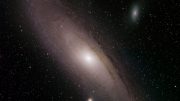
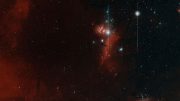
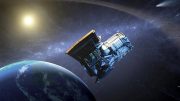

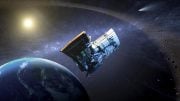
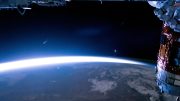
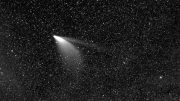
Hello, I thank the site manager for taking the trouble to manage and monitor the pages of the site. The stars may not swell. I do not believe that the stars will turn red and then collapse or explode. I do not believe in the Big Bang. but the planets that are very small collide with the stars. In our solar system, we can see the impacts of very small planets of the Milky Way that collided with the sun, and the front and part of the core of these planets that collided with the body of the sun and in the orbits of rocky planets. We can see that the metal shards of these planets hit Mercury after disintegration, and because of this, Venus moved them, and reversed, these shards also hit the moon and the earth, that’s why the earth’s crust is full of different metals, if the earth is like The planets Mercury, Venus, and the Moon did not have an atmosphere, and the soil did not rain for millions of years, and the soil did not erode. The Earth, like the Moon, remains untouched by the impact of meteorites, and like the surface of Mercury, Venus, and the Moon, it was full of holes and pits. This is not the case, the rain has washed the surface of the earth for hundreds of millions of years until the mountains and valleys have formed, and the rain has caused the layers of the earth to loosen and move, and the moon has moved the earth’s crust in some parts of the earth by means of tides, but this matter As I mentioned, it takes tens of thousands of years for us to witness the changes in the earth’s crust, and our lifetime cannot observe these changes, but from the movement of the earth’s crust, we notice these changes and trace these changes. The appearance and surroundings of the four gas planets and the rapid rotation of the four gas planets, I realized that the very small stars of the Milky Way Galaxy collided dozens of times with the planets Neptune, Uranus, Saturn, and Jupiter, and caused these planets, even though they are far from the sun. Compared to the four rocky planets, they rotate much faster than the four rocky planets. Why? Because whenever a star collides with a planet, the planet’s movement around itself becomes faster. Consider two gears that ride on each other, they transfer their power to the other because they rotate in opposite directions, but if two spheres rotate in the same direction, they will collide They collide slowly and stop or reverse, like Venus and Mercury, the planets that came close to the sun collided with Mercury and Venus. You should know that this issue is very complicated. I realized the earth and the destiny of the earth and I said before that I am the owner of time with dozens of signs and I have a book and in the verses whose numbers are related to the date of the revelation of the book and my age of 46 at the time of the revelation of the book and this is not an issue that I I have determined and I know that maybe I shouldn’t mention these issues too much on this site, but our story and God’s story is related to the fate of the earth and the sun, the solar system and its moons, especially to those who created the islands of South Asia in the form of dinosaurs and brother and It was God’s work for my sister to get a doctorate in dentistry in the Philippines so that I could understand that these islands are exactly dinosaurs created by God at that time. Here, God meant the same people who lived with dinosaurs in the past history of the earth and the same With the smallest changes on these islands, humans were able to shape the Philippine islands into the shape of a baby dinosaur. It is known that most of the hands and feet and part of the body of this baby dinosaur went under the water due to the rise of the ocean. Credit 00989332197646 qaeam sahebzamanmehrdad8:00am